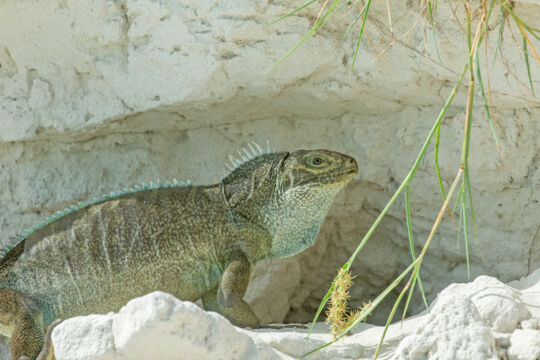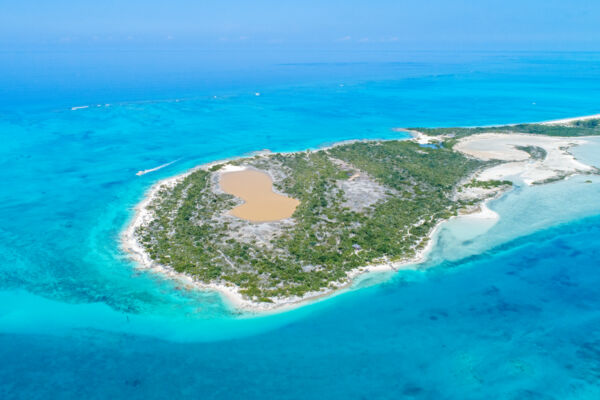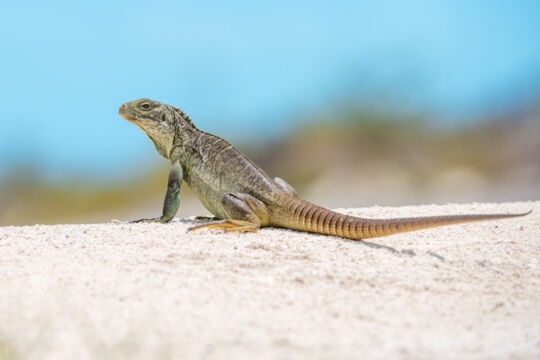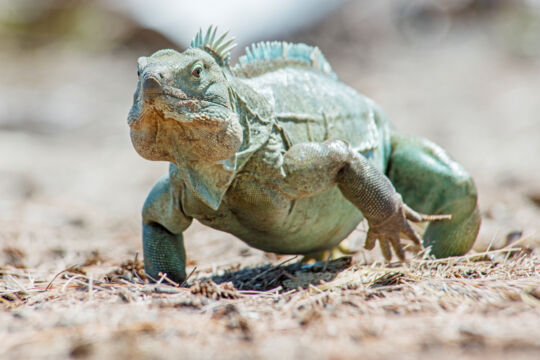The Turks and Caicos Islands Rock Iguana
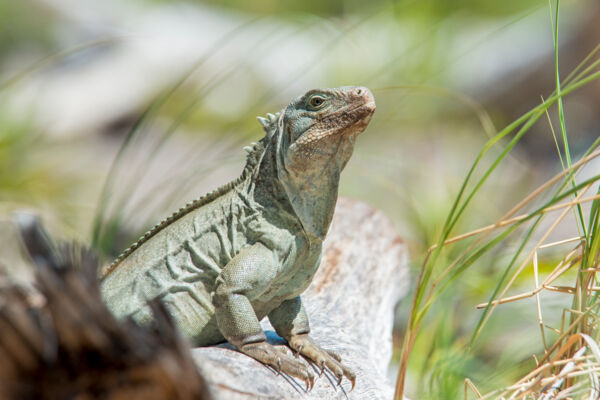
Found only on some of the islands in the Turks and Caicos, the Turks and Caicos rock iguana (Cyclura carinata) is the largest non-extinct indigenous land animal found in the country. While the species' IUCN status recently changed from critically endangered to endangered, it’s estimated that there are only about 50,000 Turks and Caicos rock iguanas in existence.
Turks and Caicos rock iguanas tend to be varying shades of green, with some iguanas having brown and grey coloring. The largest iguanas can approach nearly 32 inches (81 cm) in length, although 16–24 inches (41–61 cm) is far more common. It’s easy to tell the difference between adult male and female iguanas, as males tend to be much larger and have elaborate dorsal spines. Younger iguanas look much more alike.
Little Water Cay: Iguana Sanctuary
Little Water Cay is an island sancutary and the main visitor attraction where you can see Turks and Caicos Islands Rock Iguanas. It's located off the Leeward community in northeastern Providenciales in the Caicos Cays.
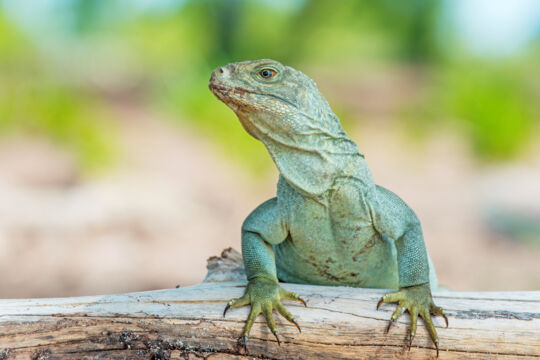
Habitat and Diet
| Turks and Caicos Islands Rock Iguana | |
| Common name | Turks and Caicos rock iguana |
| Binomial name | Cyclura carinata |
| Global conservation status | Endangered |
| Conservation status in TCI | Population increasing |
| Distribution in TCI | Somewhat common |
| Maximum size | 32 inches (81 cm) in length |
Turks and Caicos rock iguanas once inhabited all the main islands in the country. Today, they are only found on some of the smaller islands and cays.
The population and range of the Turks and Caicos rock iguana is probably less than a twentieth of what it was prior to the year 700 AD, when the indigenous Taínos arrived from neighboring Hispaniola and the Bahamas. This is due to both hunting (the iguanas were sought out by the Taíno for food) and, later on, the introduction of dogs and cats to some of the islands in the Turks and Caicos.
Iguanas tend to mainly eat plants, flowers, and fruits, but are also known to eat insects, smaller lizards, and crabs.
Burrows
Turks and Caicos rock iguanas tend to make their burrows in one of three types of terrain. On Little Water Cay (Iguana Island), Mangrove Cay, and the other sandy islands, iguanas hollow out burrows either in the light soil or into the very soft marine limestone.
In the Chalk Sound National Park, however, the tiny cays consist almost entirely of hard limestone. There, iguanas use the natural small sinkholes and crevices as their homes.
The Turks and Caicos rock iguana is an endangered species and is protected by law.
Where to See the Turks and Caicos Rock Iguana
The best place to see the iguanas is Little Water Cay (Iguana Island), an island located close off the northeast end of Providenciales.
Overseen by the Turks and Caicos National Trust, this cay has two locations with boardwalk trails that prevent harm to the iguanas and allow for easy viewing of iguana habitats.
Iguanas are some of the simplest wild animals to photograph. To get some great shots, try photographing them from their eye level. The iguanas on Little Water Cay are quite approachable.



